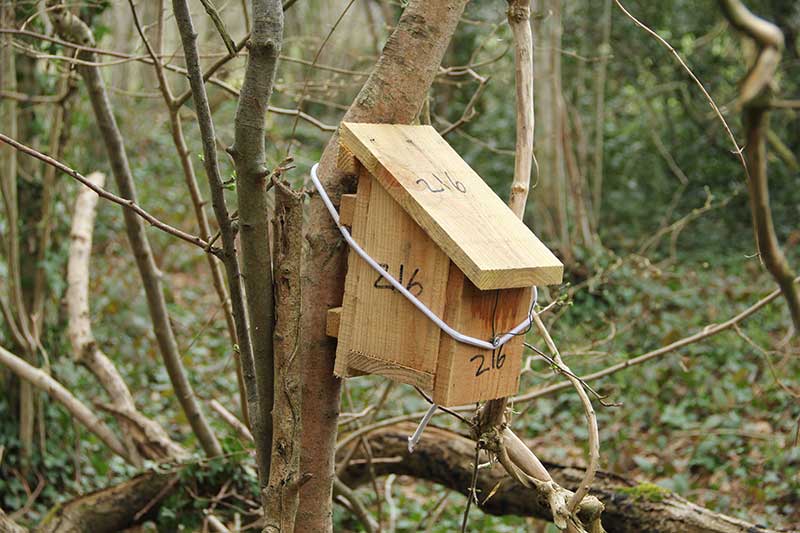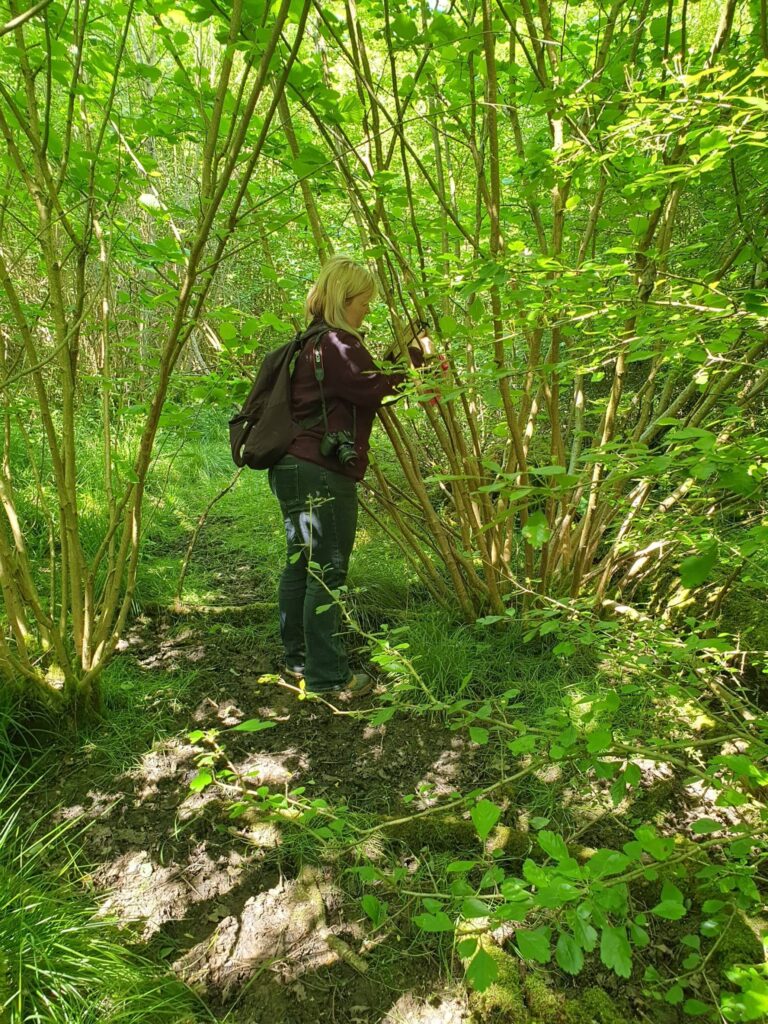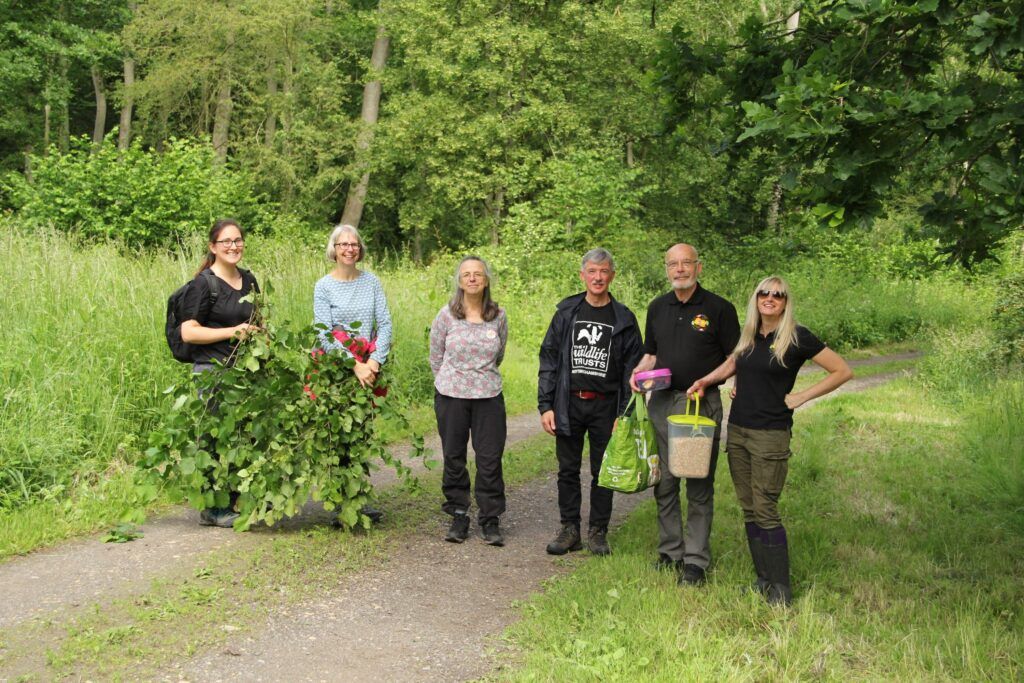Lily is a member of the Nottingham Wildlife Trust Keeping it Wild youth team. Having done a diploma at Brackenhurst, Lily has been accepted at Bangor University to study ecology and conservation. In May, 2024, The Nottingham Dormouse Group invited Lily on one of their sessions and this was her experience.
Nestled away in the north of Nottinghamshire, just a 10-minute drive from Retford, lies Treswell Wood: an enchanting ancient woodland managed by the Nottinghamshire Wildlife Trust. This reserve is a haven for wildlife, in particular holding a special charm for the Nottinghamshire Dormouse Group – as the reserve provides a crucial sanctuary for the endangered and elusive hazel dormouse. The Nottinghamshire Dormouse Group comprises of dedicated volunteers who devote their time to conserving hazel dormice in Nottinghamshire, following their successful reintroduction to the county. Recently, I had the incredible opportunity to join the group for a monitoring session in Treswell Wood to collect data for the National Dormouse Monitoring Programme.
Here is a glimpse into the fascinating experience…


The day began at around 9:30am when dedicated members and volunteers started arriving on site. Lorna, the brilliant chair of the Dormouse Group, introduced herself and organised everyone into groups to ensure comprehensive coverage of the vast woodland. Each group set off equipped with recording sheets, gloves, facemasks, and all the essential tools to monitor dormice safely and accurately. These tiny creatures are protected by numerous laws and licences, making it crucial that all monitoring activities adhere strictly to these regulations. This includes wearing facemasks and gloves when handling individuals, to ensure their safety.
I was assigned to Michael’s team, who is a licenced member of the group. As we navigated through the woodland, Michael shared his extensive knowledge of the woodland and its elusive inhabitants. Hazel Dormice are a species of small mammals native to the UK, recognised for their soft golden-brown pelage. They thrive in woodland habitats with rich and diverse flora, which makes Treswell Wood an ideal environment for them. In May, the understory of the woodland was teeming with plants, providing ample foraging opportunities for the dormice. Springtime rays of sunshine filtered through the canopy, casting a dappled light over the verdant green carpet of the woodland floor.

Our team had two sections of dormouse boxes to check, with a much-needed lunch break halfway through. As we approached each dormouse box, we bunged the entrance and carefully slid the lid across. Each check was performed with great heed and caution to avoid disturbing any dormice in a state of torpor. Dormice can enter this state of torpor during periods of colder weather. Similar to hibernation, this deep sleep mode allows them to conserve energy by lowering their body temperature and metabolic rate. Many of the boxes we inspected contained dormice in this state, preserving their energy for the warmer summer months that we all look forward to.
Handling each dormouse required great care due to their delicate and diminutive nature. We recorded the gender, breeding condition, weight, and age of each individual and entered this data into a national database. Much to my surprise, many of the individuals weighed less than a bag of hula hoops (but more than a bag of wotsits), which makes you realise just how small they are. This information is vital for informing dormouse conservation efforts – as it contributes to a national understanding of the intricate life and ecology of hazel dormouse. It also ensures that we can take appropriate actions to mitigate our impact on their population, as their dwindled numbers are a result of the loss or mismanagement of suitable woodland habitat.
The experience was not only educational but also deeply rewarding for me, as it highlighted the importance of preserving such unique species and their habitats and allowed me to witness the beauty of these ancient woodlands and the intricate lives of their inhabitants – an experience that will definitely stay with me. Being part of the amazing efforts of the Nottinghamshire Dormouse Group, just for a day, provided such an insight into the tireless effort of those volunteering their time to preserve our natural world. I would encourage anyone reading to seize any opportunity to join such a group, not only will you be contributing to preserving natural heritage for future generations, but you will also be ensuring the survival of precious species like the hazel dormouse. Treswell wood and its inhabitants are just one example of many habitats waiting to be cherished.
Learn more about the National Dormouse Monitoring Programme and how to get involved:
Header image credit Kozma 94, shutterstock.com
